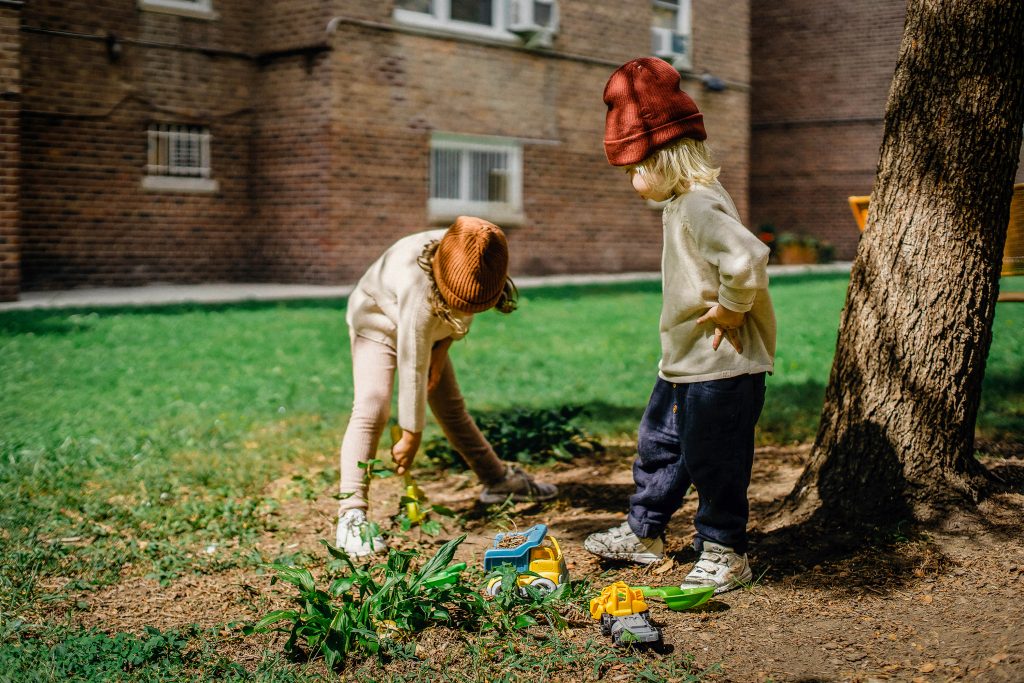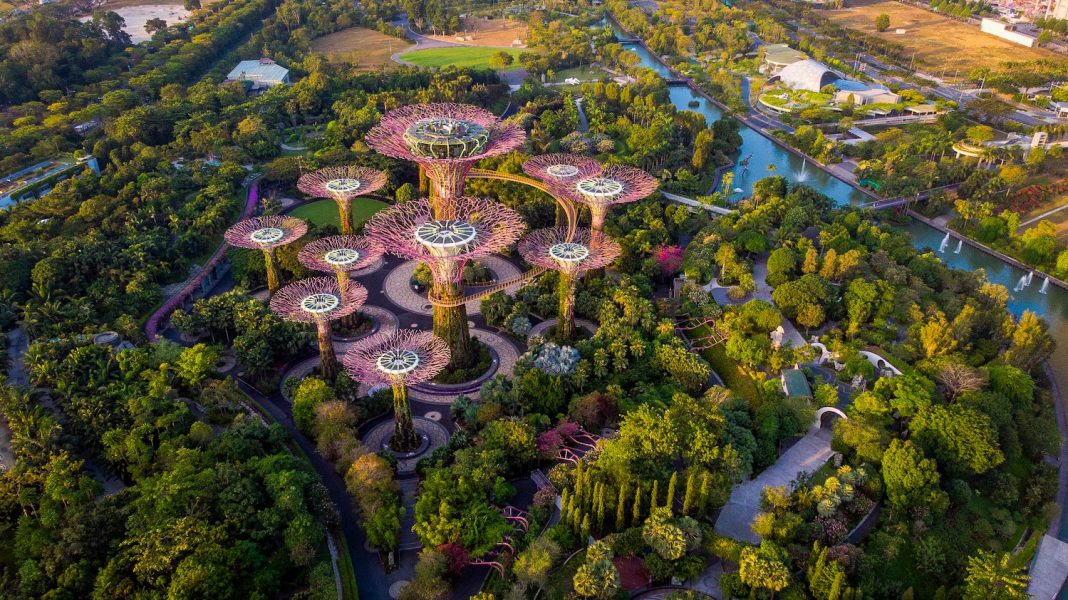The United Nations’ article ‘Cities and Pollution‘ states that cities use up 78% of the world’s energy and produce more than 60% of greenhouse gas emissions, all while covering less than 2% of our planet. Trying to reduce, if not fight, this effect is therefore crucial. How? By implementing green areas into modern, urban cities.
We spoke with Marian Stuiver, a specialist in sustainable urbanisation, green growth and inclusive development, who is currently working as a Programme Leader of Green Cities at Wageningen University & Research in the Netherlands. Green Cities is a programme that focuses on understanding and applying a nature-based approach in urban areas. It aims to make cities climate-adaptive and circular.
Here are our main takeaways about why green spaces are crucial in urban environments.
The Biggest Benefits of Green Spaces in Cities
There are numerous benefits of vegetation in urban settings, such as improvement of air quality, noise reduction, water management, protection against the heat islands effect, production of organic and fresh food, and increase in real estate value (read more here); but the top 3 benefits that Marian emphasizes are:
Climate Adaptation
Climate adaptation essentially means that cities adapt to climate change, which is not to be confused with climate mitigation, meaning efforts to reduce greenhouse gases emissions.
70% of the world’s population is expected to live in urban areas by 2050; in fact, the urban population today is 4 times larger than it was in 1960. As a consequence, the United Nations predicts that due to rapid urbanisation, it will either become more difficult for cities to fight climate change or it will push people to develop new strategies regarding climate adaptation and mitigation.

Now, considering the whole picture, simply planting trees among all the concrete may seem a little redundant, but even small changes like these can have a great impact – neighbourhoods with vegetation can be up to 2°C cooler and can help fight the heat island effect, and shaded parking lots keep cars cooler, consequently reducing the emission from fuel tanks and engines. Not only that, trees help pull CO2 out of the air and release oxygen in return: the more trees the city has, the cleaner the air. Moreover, some cities are on the way to decarbonisation – reversing climate change.
Vegetation is crucial for fighting climate shocks, points out Marian, which can be seen especially in summer when having or not having trees in the streets can make a huge difference. As climate change is the new constant, we really need areas in cities where residents can find shade in hot summers, and where water can find its way through the soil in case of heavy rain.
Often overlooked, but a big part of climactic changes is soil. “Soil is the largest terrestrial store of carbon on the planet, storing nearly twice as much carbon as that in all living plants and the atmosphere combined,” reports the Environment Journal. But not only that, its significance lies in retaining water as well. Soil is a natural water-storage system, potentially preventing flooding in built-up areas.
Biodiversity
With the progression of urbanisation, the degradation of ecosystems and biodiversity is on the rise. Biodiversity is important for a healthy ecosystem everywhere, even in an urban setting. It represents vegetation, animals and other organisms coexisting together in a specific environment. It represents the well-being and health of a city: the more variety of life, the healthier it is, and on the other hand, a lack of it, leads to unclean water and/or water pollution.
Marian explains it’s important to give nature its space in the city and to educate people about the meaning of biodiversity. “We need biodiversity in the city, in a way that it’s accessible and safe to people,” adds Marian.
Health & Well-Being
There’s a whole spectrum on which nature in cities is an important factor for improving residents’ health.
“If people get closer to nature, they also understand the importance of nature and what it does to their health.”
If there is more greenery in the city, people tend to move, walk more and participate in all kinds of outdoor activities. Marian elaborated that this was even more visible when COVID-19 started – if people sit inside all the time and eat more, they gain weight, and their mental health starts to suffer.
Other benefits of green areas in cities to psychological health emphasized by Marian include:
- memory stimulation in people with dementia
- release of excessive energy in an environment with good impulses for children with ADHD
- help with concentration, focus and calm for individuals with ADHD
- boost of encouragement for people with depression
- longer life expectancy
However, not to confuse, “vegetation is a factor, it’s always better to include green zones than not, but it’s not necessarily the ultimate factor of positivity,” Marian makes it clear.
There is no denying, plants and greenery have a therapeutic effect on humans. Greenery “contribute[s] to urban amenities, evoking symbolic values and aesthetic emotion of having natural landscapes in the humanised contexts,” reports IOP science. Vegetation makes the building and the cities more exciting, it creates a sense of being connected with nature, as well as providing social benefits.
Green surfaces bring people together. Parks, forests, etc., enable groups to socialise in a relaxed, comfortable manner, without the bustling sounds of sleepless cities. Green zones help with community building through the inclusion of everyone, no matter the age, gender, race, religion, nationality, vocation or status. And how better to get involved with your fellow neighbours but through creating something together, through community gardening?
It’s not only individuals who have started to notice the benefits of implementing greenery into cities but businesses and healthcare facilities, too. Green roofs are the new ‘it’ thing, and rightfully so; there are many benefits to them.
For example, Brooklyn Grange created a farming green roof to promote sustainable living through food, education and events, all while nourishing relationships with the community.
As for healthcare facilities, green roofs present a safe space for patients. They can go on the roof, enjoy the vegetation, interact with other patients or staff members, effortlessly lowering stress levels and encouraging natural healing.
To Recap
Climate change is happening, the sooner we accept it, the sooner we can fight it. One easy way of doing so is by implementing green zones into your neighbourhood or your city. This simple step can help reduce the heat island effect, aids urban biodiversity, and makes you and your fellow citizens feel better. Looking at it, there is no argument for not having a little spot of greenery in the city. Plant a tree, start a garden in your backyard or on a rooftop or push your municipality for more parks and fewer parking lots – whichever it will be, you will have done something positive for our beloved environment.




[…] lives in enclosed buildings. That’s quite a lot, considering how much vegetation and the outdoors positively affect us. So, why don’t we simply incorporate greenery into the place where we spend most of our […]